Not only possessing rich nature and diverse climate, Vietnam also has thousands of years old traditional medicine (TM) - a treasure trove of folk knowledge combined with comprehensive health care.
Health tourism not only contributes to people’s health care but also promotes socio -economic development, enhancing the cultural and natural values of the region. However, to realize this potential, there needs to be a synchronous and connected mechanism and policy from the central to local levels.
1. Linking traditional medicine with ecotourism – an inevitable trend in developing health economy
- 1. Linking traditional medicine with ecotourism – an inevitable trend in developing health economy
- 2. Current situation and regional advantages
- 3. Challenges and policy gaps
- 4. Proposing to perfect the mechanism and policies to develop the model
- 5. Building a unified policy corridor – the foundation for Vietnam to become a destination for traditional medicine tourism
- 6. Connecting to build identity and sustainable development
Vietnam possesses a rich traditional medicine, which is considered a precious cultural heritage of the nation. The Party and State's policies in recent times have repeatedly emphasized the preservation and development of traditional medicine. For example, Directive 25/CT-TTg dated September 15, 2025 of the Prime Minister recently determined: Traditional medicine is "a precious cultural asset of the nation... formed and developed in association with the history of the country's development".
In addition, Resolution 72-NQ/TW dated September 9, 2025 of the Politburo on "a number of breakthrough solutions to strengthen the protection, care and improvement of people's health" affirmed: "Health is the most valuable asset of human beings, the most important foundation for the happiness of each person, for the survival of the nation and the prosperous and sustainable development of the country". At the same time, in the field of tourism, the health sector also clearly stated: "Medical tourism is one of the fields with great potential for development in Vietnam".
From that, it can be seen that: Linking traditional medicine with regional cultural and ecological tourism to develop therapeutic and resort tourism services is in line with international trends, taking advantage of the nature and cultural characteristics of the region, containing factors of health care, cultural preservation and economic development.
Thailand, Japan, South Korea and China have successfully built national brands for health tourism associated with traditional medicine. In Vietnam, the link between traditional medicine and tourism is still loose, lacking an overall strategy, and has not really become a driving force for regional development.
2. Current situation and regional advantages

Tourists experience herbal foot bath of ethnic minorities in the Northwest...
Associate Professor, Dr. Dau Xuan Canh, Chairman of the Vietnam Oriental Medicine Association, said that many localities have begun to exploit the model of health tourism combined with Oriental medicine. In Quang Ninh, Quang Hanh mineral spring area is oriented to become a "natural therapy center" based on local mineral and medicinal resources. In Yen Bai, Lao Cai, Ha Giang, Dao herbal bath tourism is favored by international tourists because of its uniqueness and effectiveness in restoring the body. In Hue, Da Nang, Hoi An, Da Lat, spas using medicinal herbs, acupuncture, and traditional massage have become unique tourism products.
The strengths of this model include:
- Cultural characteristics : Traditional medicine has strong national and regional identity; it is a factor that attracts domestic and foreign tourists who want to experience culture and therapy.
- Natural resources and medicinal herbs : The ecological area has medicinal herb forests, mineral springs, fresh air, natural landscapes - very suitable for therapeutic resorts.
- Potential for local economic development : Linking medicinal plant cultivation, therapeutic tourism, resorts, etc. helps create livelihoods for remote areas, increase the value of local medicinal plants, and retain local workers.
- Support from national policies : The above documents have created a "fulcrum" for the development of traditional medicine in general, and paved the way for new linkage models such as therapeutic tourism.
However, reality shows that there is still a big gap in the development of traditional medicine tourism services: There are not many models, weak connections, unclear standards, and a lack of support policies.
3. Challenges and policy gaps
Currently, Vietnam has a Strategy for Traditional Medicine Development to 2030 (Ministry of Health) and a Strategy for Vietnam Tourism Development to 2030 (Ministry of Culture, Sports and Tourism). However, there is no clear interdisciplinary bridge between these two strategies, especially at the regional level - where the strengths of medicinal resources, culture and indigenous communities can be exploited.
To develop a model of regional traditional medicine tourism and resort, there are many notable challenges:
- Lack of close inter-sectoral coordination: Traditional Medicine - Tourism - Culture - Agriculture - Environment are many related fields, but the coordination mechanism is still fragmented.
- There are no clear standards for traditional medicine tourism services: Quality criteria, facilities, human resources, medicinal herbs, combined with eco-tourism... have not been legalized in a synchronous manner.
- The specialized legal framework for modern traditional medicine and therapeutic tourism has not been completed : Directive 25/CT-TTg requires "proposing to develop a Law on traditional medicine". At the same time, Resolution 72-NQ/TW also states the need to "complete the synchronous institutional system" of traditional medicine.
- Human resources, facilities, medicinal herbs and tourism are still limited : Regions may lack standard resorts and specialized treatments, and medicinal herbs networks may not be developed to international standards.
- Lack of investment support mechanisms, incentives and preservation of indigenous knowledge : Investing in traditional medicine tourism services requires capital, technology, and preservation of ethnic knowledge - requiring clear incentive policies.
4. Proposing to perfect the mechanism and policies to develop the model

In Quang Ninh, Quang Hanh mineral spring area is oriented to become a "natural therapy center" based on local mineral and medicinal resources.
Associate Professor, Dr. Dau Xuan Canh emphasized: Traditional medicine is not only a system of medical knowledge, but also the cultural identity and lifestyle of the Vietnamese people. From Red Dao bath medicine, herbal wine soaking, acupuncture, leaf steaming, to care products from natural medicinal herbs - all can become a source of inspiration for health tourism products with Vietnamese identity.
If planned properly, traditional medicine can contribute to creating a value chain of "Medicinal herbs - Therapy - Tourism - Community"; exploiting the development potential of mountainous areas and ethnic minority areas through medicinal herb cultivation, therapeutic homestays, and community tourism; contributing to the preservation of indigenous knowledge, while promoting green economy and sustainable tourism. Accordingly, it is necessary to:
4.1 Building a legal framework and specialized standards
- Promulgate the Law on Traditional Medicine (in accordance with the direction in Directive 25/CT-TTg).
- Develop and promulgate national standards for traditional medicine-based treatment and resort tourism, including criteria on facilities (resort space, ecological environment), treatment personnel (traditional medicine practitioners, health tourism experts), medicinal herbs (grown and processed according to international standards GACP-WHO), and processes for combining traditional medicine-tourism-ecology.
- Complete the payment mechanism for health insurance and travel insurance for traditional medicine treatment services, expand the scope of use of traditional medicine and traditional medicine services as proposed in Directive 25/CT-TTg.
4.2 Establishing inter-sectoral-inter-regional mechanisms and local investment
To complete this "puzzle", experts say it is necessary to implement a number of synchronous directions:
1. Develop a National Strategy on Traditional Medicine Tourism - unified between the Ministry of Health and the Ministry of Culture, Sports and Tourism, with clear standards for treatment facilities, safety and human resource training.
2. Develop pilot models in areas with medicinal advantages: Northwest (Dao medicinal bath), Central region (mugwort, cinnamon, lemongrass therapy), Central Highlands (essential oils, steam bath).
3. Create a national brand "Vietnam Wellness & Traditional Medicine Tourism", targeting the international market.
4. Invest in training "dual" human resources - combining traditional medicine skills, foreign languages, tourism services and traditional culture.
5. Promote communication and digital transformation: Build a digital map of traditional medicine tourist destinations, introduce traditional medicine and therapies through digital platforms.
6. Implementation organization: Establish a coordination mechanism between the ministries: Ministry of Health – Ministry of Culture, Sports and Tourism – Ministry of Agriculture and Rural Development – Ministry of Natural Resources and Environment – Ministry of Science and Technology – Ministry of Finance.
Assign the People's Committees of provinces/cities to develop plans for developing traditional medicine tourism combined with developing medicinal herb areas and ecological resorts, suitable to the characteristics of each region (such as the Northwest, Central Highlands, and North Central Coast).
Investment incentive mechanisms: land, tax, preferential credit, support for starting traditional medicine-tourism services, preserving indigenous knowledge of ethnic minorities.
4.3 Development of resources, medicinal materials and services
Encourage the development of national medicinal herb areas, standardize cultivation, processing, and traceability of medicinal herbs, serving both healthcare and therapeutic tourism purposes. (Directive 25/CT-TTg clearly states this).
Training human resources for health tourism combined with traditional medicine: traditional medicine doctors, therapy technicians, wellness tourism service specialists, rehabilitation nurses.
Support the development of a pilot model of "therapy village" or "traditional medicine resort" in areas with available medicinal herbs - nature - culture - and then replicate it nationwide.
4.4 Strengthen communication, branding and internationalization
- Building the brand "Vietnam Traditional Medicine Tourism" associated with regional cultural and ecological tourism to attract domestic and international visitors.
- Promote and advertise Vietnamese traditional medicine and eco-resort treatments to the international market (wellness tourism).
- Support scientific research, technological innovation, and digitalization of traditional medicine and tourism services (in the spirit of Resolution 72-NQ/TW).
5. Building a unified policy corridor – the foundation for Vietnam to become a destination for traditional medicine tourism
Combining traditional medicine heritage with regional cultural and ecological tourism to develop therapeutic and resort tourism services is not only an inevitable trend but also a long-term strategic choice. This model converges health care, cultural preservation, regional natural development and sustainable socio-economic development.
Policy documents such as Directive 25/CT-TTg and Resolution 72-NQ/TW have clearly affirmed the role of Traditional Medicine and people's health as a valuable asset and a top political task. To turn potential into reality, there needs to be a strong, unified policy corridor from the central to local levels, while at the same time gradually organizing clear practical models at the local level.
If we act decisively, by 2030, Vietnam can not only be confident with its domestic traditional medicine tourism network but also reach the regional level — contributing to improving life expectancy, community health and bringing the brand "Vietnamese Traditional Medicine - Health Tourism" to the international market.
6. Connecting to build identity and sustainable development
Traditional medicine blends folk knowledge, the essence of nature and profound human values. Combined with health tourism, Traditional Medicine opens up opportunities for regional economic development, while helping tourists experience a healing, peaceful and loving Vietnam. If tourism is considered a journey to regain balance, then Traditional Vietnamese Medicine is the heartbeat of that journey.
Connecting Traditional Medicine with health tourism is not only a matter of profession, but also a matter of regional development, cultural development and community health.
That is the missing piece in the picture of sustainable national development – where people, nature and traditional knowledge work together for a healthy, distinctive and livable Vietnam.
Readers can see more:
Source: https://suckhoedoisong.vn/ket-noi-y-hoc-co-truyen-voi-du-lich-suc-khoe-manh-ghep-con-thieu-trong-phat-trien-vung-va-chinh-sach-quoc-gia-169251107131135317.htm








![[Photo] Da Nang: Hundreds of people join hands to clean up a vital tourist route after storm No. 13](https://vphoto.vietnam.vn/thumb/1200x675/vietnam/resource/IMAGE/2025/11/07/1762491638903_image-3-1353-jpg.webp)
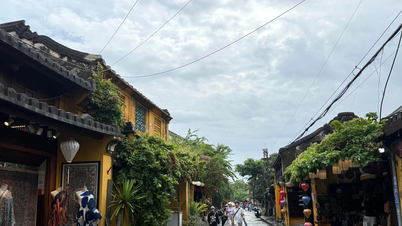





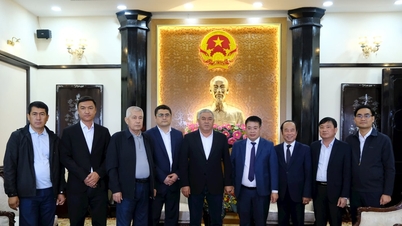

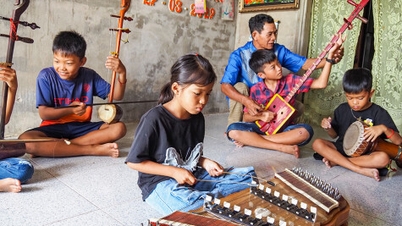




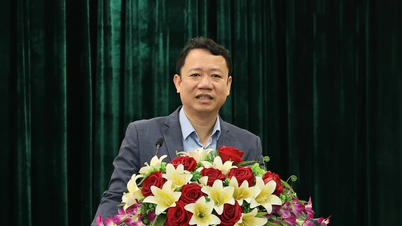













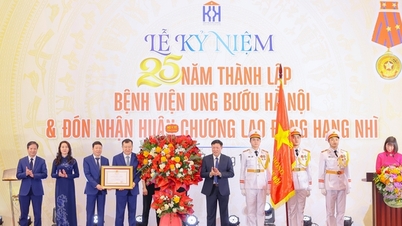






































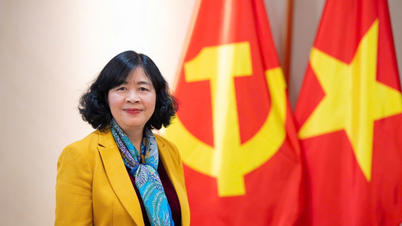






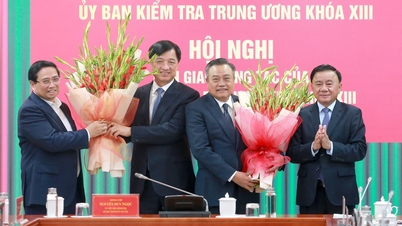





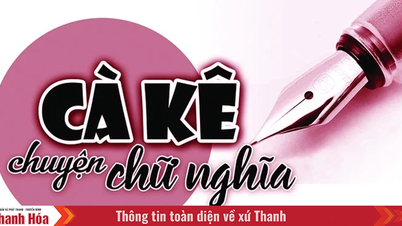


























Comment (0)